Tesco has much work to do to create a convincing case to suppliers for its instore digital media, says Siân Harrington
The jury’s out on Tesco’s screen advertising network trial. This week the Tesco board weighs up the evidence to decide how or whether to proceed with this new instore advertising medium.
Meanwhile brand manufacturers and media agencies are doing their own number-crunching to decide whether the opportunity lives up to the hype.
The experiment has been closely watched since Tesco marketing director Tim Mason said advertisers should think of the UK’s largest retailer as a media channel and Nestlé Rowntree marketing director Andrew Harrison stood up at a television conference and declared supermarkets the “new media” (The Grocer, November 9, 2002, p32).
Tesco TV, as the company calls it, is being tested in three locations: Bar Hill on the outskirts of Cambridge, Newmarket Road in Cambridge city centre, and Addlestone in Surrey. The number of screens depends on store size, with the Bar Hill Extra store containing the most, at about 70.
These are 42-inch plasmas hanging from the ceiling along the main horizontal aisle, mini screens attached to the top of fixtures and a back-projected screen at the entrance. Panasonic is providing the screens, Kingston Inmedia the infrastructure and captive audience specialist Instrumental Media Group is managing the project.
Tesco is the first retailer to fully explore instore digital advertising networks - the most sophisticated enabler in retailers’ bid to become a media channel. They allow suppliers to take an above-the-line brand campaign and translate it into the store, thus giving retailers a new source of revenue away from promotional spend. They also allow the retailer to offer an advertising space to companies outside its supply chain. Imagine advertisements for Ford cars, a recruitment ad for the police or a new housing development in the area - all hitting millions of shoppers at appropriate times of the day.
So the Tesco trial is in the spotlight. And on the face of it there are some fundamental errors. First placement. The back-projected screen is difficult to read and the customer has walked under it by the time any message is completed. ‘Did you know..?’ say the words on the screen. The customer will never know. There are too many plasma screens in the aisle, making them merely wallpaper to the customer. And, as those in traditional printed point-of-purchase know, hanging signage is less effective than that located on the floor or at the fixture. People do not push a trolley with their eyes on the ceiling. In the trial, the fixture screens are attached at the top of the unit. They quite literally go over customers’ heads.
Then there is content. An advertisement on the health benefits of broccoli could shift more of the product if located in the vegetable zone. But on a screen in the Cherokee clothing department, where parents are in browsing mode, it is unlikely to have an impact. How much better it would be to have pictures of cute babies wearing different combinations from the Cherokee range. Likewise, there is not much point advertising CDs - located at the beginning of the store - in the beers, wines and spirits aisle at the end.
“A half-hearted attempt”, “ghastly”, “disappointing” and “not thought-through” are some of the responses from the instore marketing industry. If it does not work it will put the digital point-of-purchase market back years, they say.
But more important are the brand manufacturers that put content on screens. Those involved will have hard data in four to six weeks’ time. Initial feedback shows they need more convincing. “The screens are not in the right place yet,” says one international manufacturer. “And it is not nearly as sophisticated as Sainsbury’s trial.”
Another said the “silence was deafening” when he asked his Tesco account manager about the success of the trial, while Chris Morgan, customer relations director at Cadbury Trebor Bassett, says: “Our view at the moment is that the money it will cost us to advertise on the screens will be better invested in other ways in store.”
Others are interested in the opportunity but want more tangible evidence that it will work. “The jury is out on the success of this medium,” says Heinz Europe general manager, corporate affairs, Michael Mullen. “Heinz sees it as an opportunity to be close to the consumer at point of purchase. Tesco is at the forefront of this and we want to be involved.”
Carl Davies, Tesco account manager at Gillette, adds: “Clearly there is learning to undertake but screens can only help to put across our consumer message at this point of purchase.”
However, it must be remembered Tesco established the trial primarily to determine customer acceptance of the medium - not how good the technology was, what content would work or where the screens should be located. That can all come later. The overriding question is, do customers want instore TV advertising and find it relevant? Speaking to The Grocer in January, Tesco media manager Bill Pennell said: “It is a balance between being effective and intrusive. It all comes down to what our customers want.” (The Grocer, January 11, p10)
It is the research into customer acceptance of the medium, being conducted by Millward Brown, which will be presented to the board, and the results of that will determine how Tesco moves forward. “We are getting feedback from customers and staff in stores. We don’t want to launch something customers don’t want or don’t find relevant. It may well look very different if we push ahead,” says a Tesco spokesman.
Tesco says early indications are that customers do accept the concept. Negative feedback is being carefully considered.
While the trial is not sales-orientated, some manufacturers have seen uplifts. One major supplier had two products in the trial. It has seen little sales benefit from one during the trial but, across the board, there has been a 7% increase in sales of the other compared to similar stores.
According to the manufacturer, this has given an indication of the type of market attracted by this form of advertising.
In relation to other criticisms, Tesco has already made changes. The large screen at the entrance is being removed because the back-projection technology was not right to support it. Content and screen placement will be looked at carefully in the next stage.
The lukewarm response from manufacturers also highlights the need for a proper media effectiveness trial.
But research is the name of the game and if there is one thing at which Tesco excels it is customer understanding. With other major retailers soon to embark on their own trials, it is too soon to write off this medium - and it is certainly too soon to write off Tesco’s trial.
Shifting product
The jury’s out on Tesco’s screen advertising network trial. This week the Tesco board weighs up the evidence to decide how or whether to proceed with this new instore advertising medium.
Meanwhile brand manufacturers and media agencies are doing their own number-crunching to decide whether the opportunity lives up to the hype.
The experiment has been closely watched since Tesco marketing director Tim Mason said advertisers should think of the UK’s largest retailer as a media channel and Nestlé Rowntree marketing director Andrew Harrison stood up at a television conference and declared supermarkets the “new media” (The Grocer, November 9, 2002, p32).
Tesco TV, as the company calls it, is being tested in three locations: Bar Hill on the outskirts of Cambridge, Newmarket Road in Cambridge city centre, and Addlestone in Surrey. The number of screens depends on store size, with the Bar Hill Extra store containing the most, at about 70.
These are 42-inch plasmas hanging from the ceiling along the main horizontal aisle, mini screens attached to the top of fixtures and a back-projected screen at the entrance. Panasonic is providing the screens, Kingston Inmedia the infrastructure and captive audience specialist Instrumental Media Group is managing the project.
Tesco is the first retailer to fully explore instore digital advertising networks - the most sophisticated enabler in retailers’ bid to become a media channel. They allow suppliers to take an above-the-line brand campaign and translate it into the store, thus giving retailers a new source of revenue away from promotional spend. They also allow the retailer to offer an advertising space to companies outside its supply chain. Imagine advertisements for Ford cars, a recruitment ad for the police or a new housing development in the area - all hitting millions of shoppers at appropriate times of the day.
So the Tesco trial is in the spotlight. And on the face of it there are some fundamental errors. First placement. The back-projected screen is difficult to read and the customer has walked under it by the time any message is completed. ‘Did you know..?’ say the words on the screen. The customer will never know. There are too many plasma screens in the aisle, making them merely wallpaper to the customer. And, as those in traditional printed point-of-purchase know, hanging signage is less effective than that located on the floor or at the fixture. People do not push a trolley with their eyes on the ceiling. In the trial, the fixture screens are attached at the top of the unit. They quite literally go over customers’ heads.
Then there is content. An advertisement on the health benefits of broccoli could shift more of the product if located in the vegetable zone. But on a screen in the Cherokee clothing department, where parents are in browsing mode, it is unlikely to have an impact. How much better it would be to have pictures of cute babies wearing different combinations from the Cherokee range. Likewise, there is not much point advertising CDs - located at the beginning of the store - in the beers, wines and spirits aisle at the end.
“A half-hearted attempt”, “ghastly”, “disappointing” and “not thought-through” are some of the responses from the instore marketing industry. If it does not work it will put the digital point-of-purchase market back years, they say.
But more important are the brand manufacturers that put content on screens. Those involved will have hard data in four to six weeks’ time. Initial feedback shows they need more convincing. “The screens are not in the right place yet,” says one international manufacturer. “And it is not nearly as sophisticated as Sainsbury’s trial.”
Another said the “silence was deafening” when he asked his Tesco account manager about the success of the trial, while Chris Morgan, customer relations director at Cadbury Trebor Bassett, says: “Our view at the moment is that the money it will cost us to advertise on the screens will be better invested in other ways in store.”
Others are interested in the opportunity but want more tangible evidence that it will work. “The jury is out on the success of this medium,” says Heinz Europe general manager, corporate affairs, Michael Mullen. “Heinz sees it as an opportunity to be close to the consumer at point of purchase. Tesco is at the forefront of this and we want to be involved.”
Carl Davies, Tesco account manager at Gillette, adds: “Clearly there is learning to undertake but screens can only help to put across our consumer message at this point of purchase.”
However, it must be remembered Tesco established the trial primarily to determine customer acceptance of the medium - not how good the technology was, what content would work or where the screens should be located. That can all come later. The overriding question is, do customers want instore TV advertising and find it relevant? Speaking to The Grocer in January, Tesco media manager Bill Pennell said: “It is a balance between being effective and intrusive. It all comes down to what our customers want.” (The Grocer, January 11, p10)
It is the research into customer acceptance of the medium, being conducted by Millward Brown, which will be presented to the board, and the results of that will determine how Tesco moves forward. “We are getting feedback from customers and staff in stores. We don’t want to launch something customers don’t want or don’t find relevant. It may well look very different if we push ahead,” says a Tesco spokesman.
Tesco says early indications are that customers do accept the concept. Negative feedback is being carefully considered.
While the trial is not sales-orientated, some manufacturers have seen uplifts. One major supplier had two products in the trial. It has seen little sales benefit from one during the trial but, across the board, there has been a 7% increase in sales of the other compared to similar stores.
According to the manufacturer, this has given an indication of the type of market attracted by this form of advertising.
In relation to other criticisms, Tesco has already made changes. The large screen at the entrance is being removed because the back-projection technology was not right to support it. Content and screen placement will be looked at carefully in the next stage.
The lukewarm response from manufacturers also highlights the need for a proper media effectiveness trial.
But research is the name of the game and if there is one thing at which Tesco excels it is customer understanding. With other major retailers soon to embark on their own trials, it is too soon to write off this medium - and it is certainly too soon to write off Tesco’s trial.
Shifting product







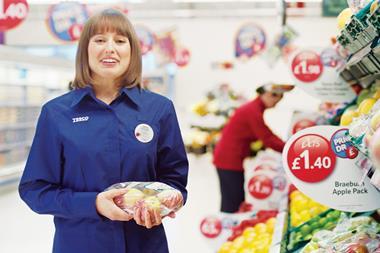





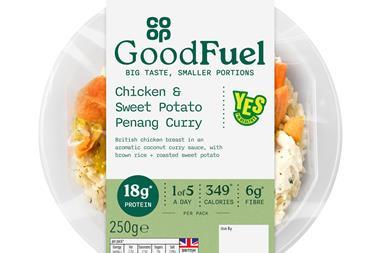

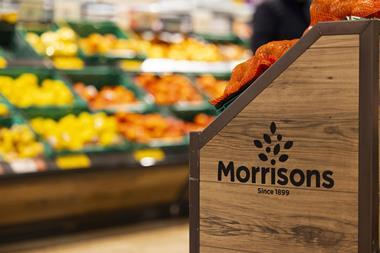

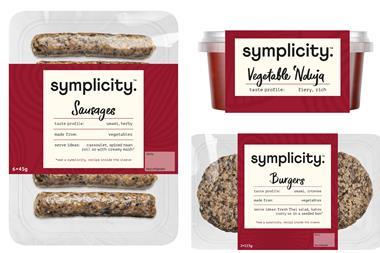
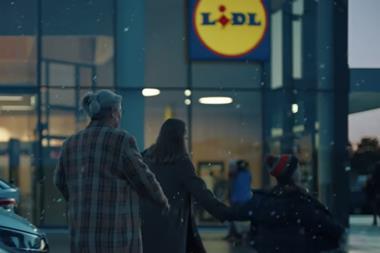
No comments yet